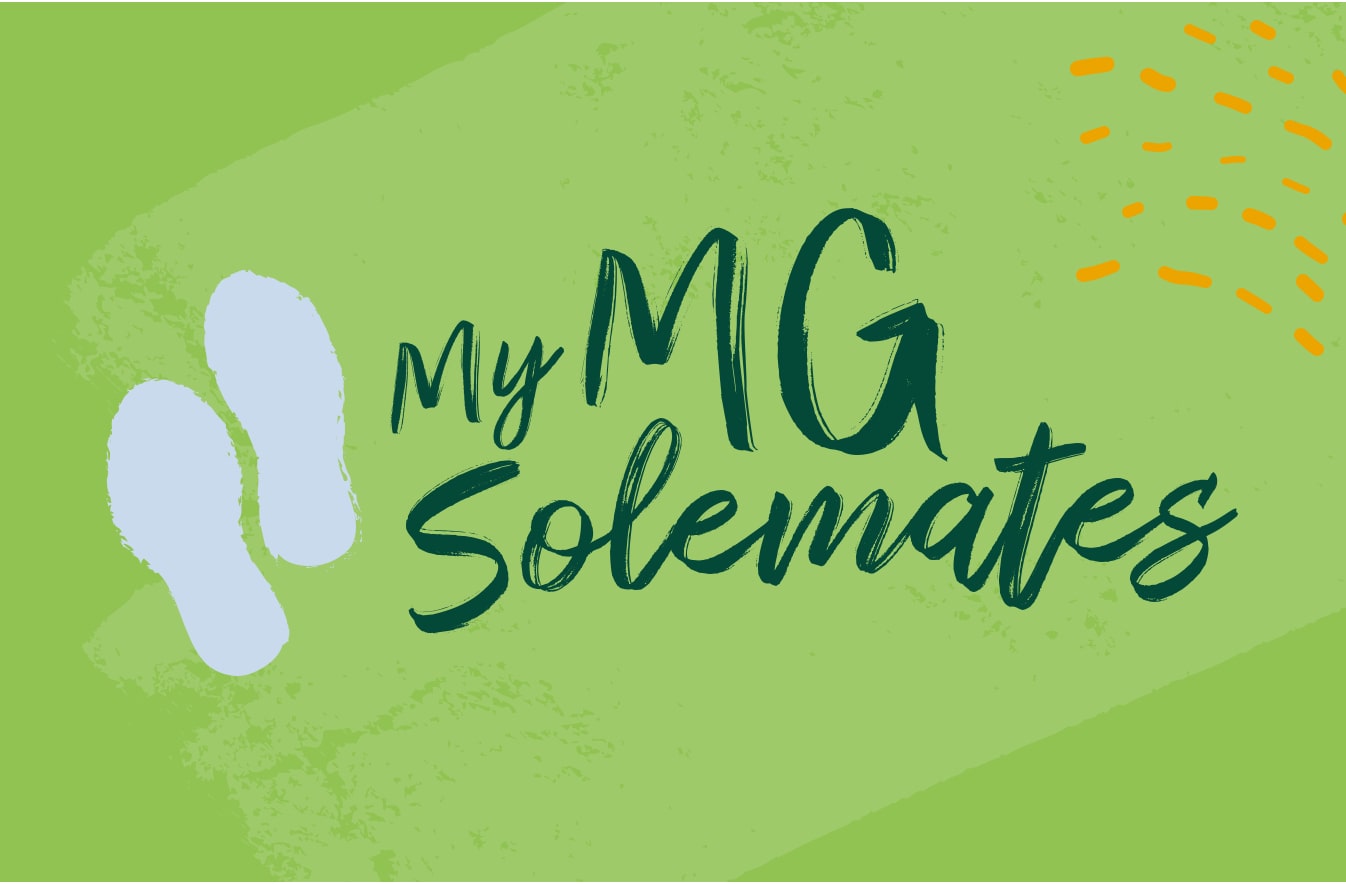Sharing your MG diagnosis at work can be intimidating. Check out some tips to help you navigate the conversation.
If you live with myasthenia gravis (MG), you may be wondering how it will affect your ability to continue working. Myasthenia gravis symptoms may make work more complicated and could even make certain jobs physically difficult to perform.1
As with anything relating to your life with myasthenia gravis, a good first step is to talk to your doctor about concerns you may have with performing your duties at work while trying to manage myasthenia gravis symptoms. Depending on your current line of work, there may be some accommodations available to help.
After discussing with your doctor, it’s up to you to decide whether or not you talk to your employer about your myasthenia gravis.
“If you’d like, take time to talk to your employer or manager about what you’re going through,” said Ron Martin, an executive director of human resources. “Employers generally want to find solutions to support people with chronic conditions like myasthenia gravis. They likely want their employees to continue to be just as, if not more, productive at work.”
If you choose to discuss your MG with your employer, it’s best to come prepared. Here are some tips for navigating what could be an ongoing conversation.

Consider Having an Open Conversation with HR and Your Supervisor
Has your employer noticed that your job performance has changed or that you’re having trouble doing certain parts of your job? Are you missing meetings or having trouble keeping up the workload? If you feel that symptoms are hindering your job performance, you may want to tell your manager or HR supervisor about your myasthenia gravis. If they don’t know that your struggles are a result of your MG symptoms, they may make incorrect assumptions about your performance.
Kait Masters, who lives with MG, said she learned this the hard way. She was let go from her position because she could no longer perform her duties, and she felt that things may have resulted differently if she had notified her employer about her MG.
“If I had been open from the start, I might have received the support I needed to continue working there,” Masters said.
An open discussion could begin by letting your employer know what you’re dealing with, what your symptoms are and how they may affect your work. While it may seem counterintuitive to reveal you might have trouble at work, it may help you in the long run.
Not only do employers want to retain good, productive employees, they often take interest in doing so.
“It often costs more to hire and train somebody than it does to work a little extra to retain an employee,” Martin said. “It’s important that employers show compassion and provide ongoing support and undivided attention to employees, including those living with MG.”
“Talking with your employer about your MG will likely be an ongoing, interactive process,” said Keith Mishler, senior HR manager at Insperity, an HR outsourcing firm. Since myasthenia gravis symptoms can change over time, your job duties may need to change over time too.2
Employers generally want to find solutions to support people with chronic conditions like MG.
Know What Accommodations Are Available to You
After talking about your MG with your employer, you and your supervisor could discuss what reasonable accommodations could be made to allow you to continue working.
For example, maybe you could take more breaks during the workday. Or perhaps you could switch from a manual labor job to a desk position, if that’s an option at your workplace. Even things like moving to a desk that’s closer to the main conference room, so you don’t have to walk as far for meetings, could make a difference.
If you need ideas, a good place to start is the Job Accommodation Network (JAN), which provides a list of potential MG-specific workplace accommodations. You also may want to revisit your employer’s HR policies about flexible schedules, sick time, disability and family and personal leave to see what else might be available to you.
“You may want to share what accommodations you believe would help you perform your job,” Martin said. “Employees with chronic conditions often know which ones are best for them.
“Common accommodations could include changes to your work schedule, adjustments to your workstation or getting new tools or devices to help you do your job,” Mishler added.
If your job can be done remotely, you may also want to ask about working from home, which can be a reasonable accommodation for some jobs. Since the COVID-19 pandemic started, many workplaces have altered policies to let employees who can do so work from home. In the post-pandemic world, businesses that may have been hesitant to let employees work from home in the past may be open to the idea.
“Many employers are realizing that people can work productively from home,” Mishler said. “It’s been eye-opening for many businesses.”
This would be a welcome change for many people with MG. If you are able to perform your job remotely, working from home can help you save energy by not having to commute to work.
Many employers are realizing that people can work productively from home.
Learn About Your Rights
Myasthenia gravis may qualify as a disability under the American Disabilities Act (ADA), particularly if you need to take time away from work.1 Many employers are already interested in making changes to support people with chronic illnesses. However, the ADA requires medium and large employers to make reasonable accommodations for employees with qualifying conditions. The ADA also protects employees from being discriminated against because of a disability.3
To be protected by the ADA, a person’s disability must meet certain requirements. You must have an impairment that largely limits one or more major life activities, have a record of such an impairment or be regarded as having such an impairment. Major life activities include hearing, seeing, speaking, walking, breathing, performing manual tasks, caring for oneself, learning or working.3
JAN also provides information on how to determine whether a person has a disability under the ADA.
Manage Personal Expectations
Myasthenia gravis symptoms may change over time, so you may want to give yourself some time to adjust before making any big decisions about your future in the workplace.2
Once you learn about your rights and potential accommodation options, if you feel comfortable, the first step could be to have that key conversation with your employer to help manage expectations at your workplace. This is a personal decision that only you can make. To learn more about your rights under the ADA, please consult a legal expert.











